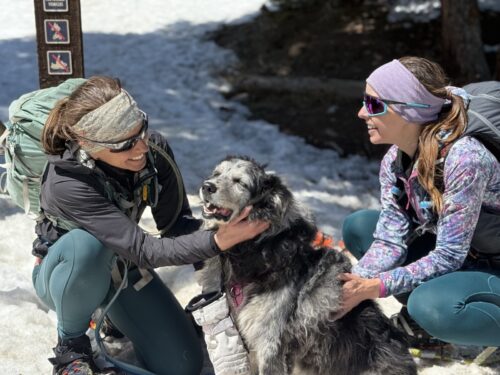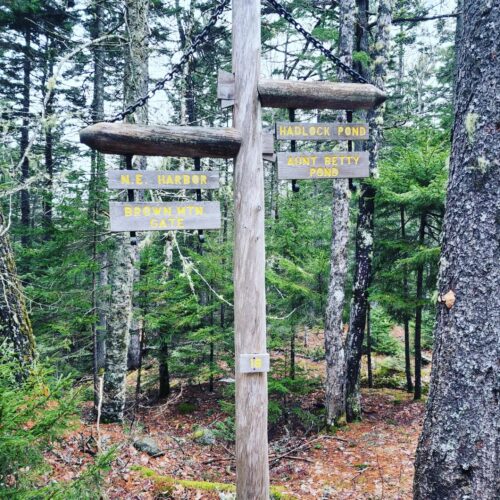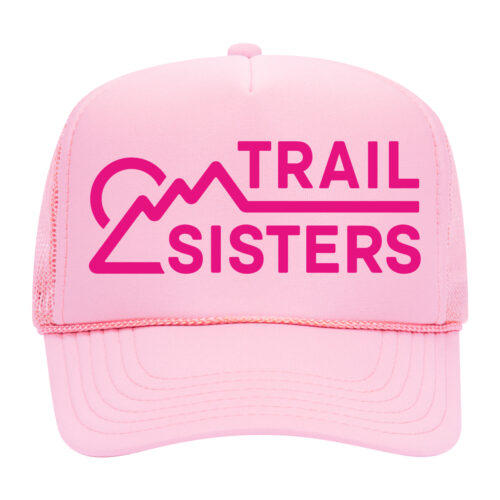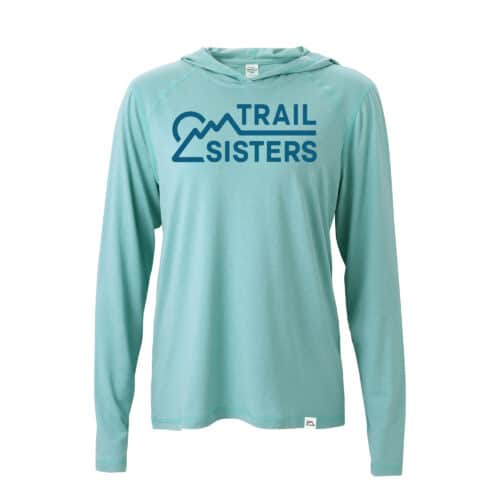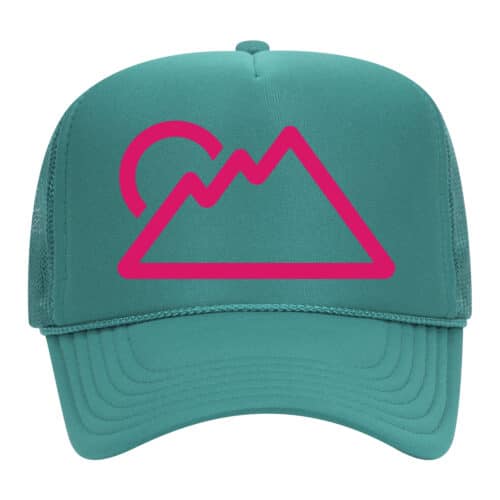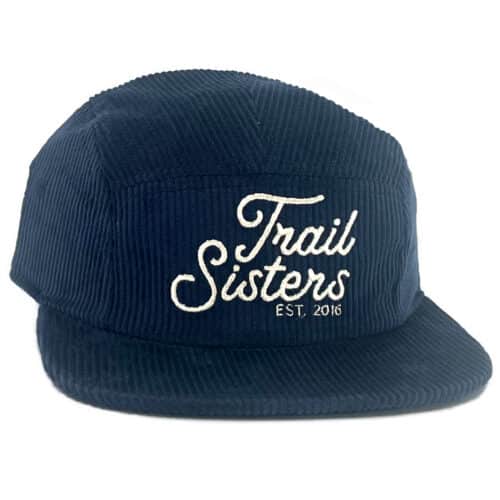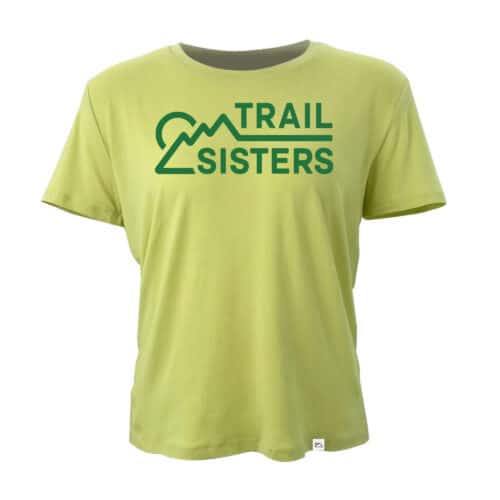Main Menu
Lessons Learned from Training with a GOAT

Melissa is a child development researcher, a Colorado native, and a proud auntie of eight not so subtly trying to “brainwash the babies” to become runners too. She ran track in middle and high school, ran cross country two years in college, and has been a trail runner since 2010. Melissa enjoys training and racing; but 60% of the time, she prefers chasing fun runs with friends exploring the mountains with a good craft beer every time. When she’s not taking way too many photos of wildflowers and breathtaking scenery on trail runs, she also enjoys writing poetry and short stories.
Share This Article!
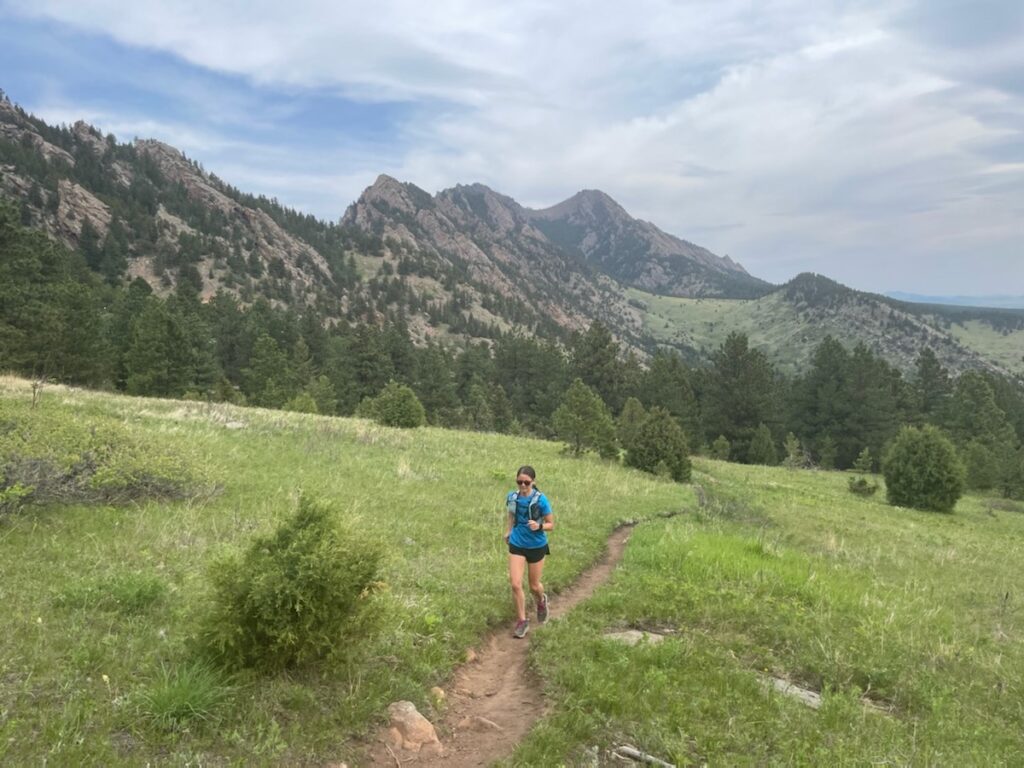

By: Melissa Mincic
Photo credit: Sarah Boyum
Whether you have a specific running goal in mind or are just looking for a different training perspective, there’s a lot you can learn from working with a coach. In my case, hiring a coach was ‘C,’ both ‘A’ and ‘B.’ Having trained and raced on my own (with the exception of a few months) for about 11 years and inched closer and closer to, but never meeting, my goal for the Pikes Peak Marathon, I wanted a coach to train me specifically for that race and to become a stronger trail runner overall.
A big-time fan girl and runner of the Pikes Peak Ascent and Marathon since 2011, I know all of the big names from both races. So I was really excited once I learned that Brandy Erholtz coached. She is very well acquainted with my ‘A’ race course, plus her strength – uphill running – is my weakness and the area where I knew I could gain the most. She won the Pikes Peak Ascent in 2008 and 2010, finished third in 2012, and finished second in 2015. She also won the Barr Trail Mountain Race (on the same course) in 2009, set a new course record – a record that still stands – in 2010, and won the race again in 2014.
Her credentials aren’t limited to Manitou Springs, Colorado, either. Brandy won the Mount Washington Road Race in 2008 and 2009 and has represented the U.S. in 13 different international competitions. She won individual titles at the NACAC Mountain Running Championship races in 2010 and 2012, set a new course record in 2014, and took second in 2009. At the World Long Distance Mountain Running Championships, she won an individual title in 2010 as well as helped Team USA to earn top finishes in 2010 and 2012 and a third place finish in 2014. While not trail running, I’ll also throw in that she’s also won U.S. Snowshoe National Championship races in 2009 (AHEM, only her third snowshoe race ever), in 2011, and in 2015 just to be sure you know how badass she truly is.
Beyond her own running résumé, Brandy told me that I needed to set a faster Pikes Peak Marathon race goal when I first talked with her about coaching, and it was then that I undoubtedly wanted her as my coach. Here are a few things I’ve learned, and am still learning, from her since we started working together in April 2021.
Chemistry is everything. George Michael sang it himself, “Sometimes the clothes do not make the [wo]man.” Beyond a coach looking good on paper, a good relationship is key to maximize coaching benefits and achieve true potential. You should trust and feel comfortable enough with your coach to let him/her know what’s working and what’s not training wise, what’s going on in your life outside of running, and how you’re feeling both physically and mentally on a regular basis, as any and all of those things can impact your training and race performance. You should trust and feel comfortable enough with your coach to be open and, at times, vulnerable. One of the first things Brandy asked me to do was to complete a very in-depth questionnaire including everything from running and injury history to negative self-beliefs. We also shot the breeze over the phone prior to any training, which was a good way to break the ice. Fast forward to five months later. I had a chance to meet Brandy in person while out of town for a race. We met up at a quiet little coffee shop on a nice August afternoon and chatted for about two hours as if old friends catching up. What started out as a good fit on paper has turned into a really great working relationship of support and camaraderie, and my decision to hire Brandy as a coach has only been validated time and time again.
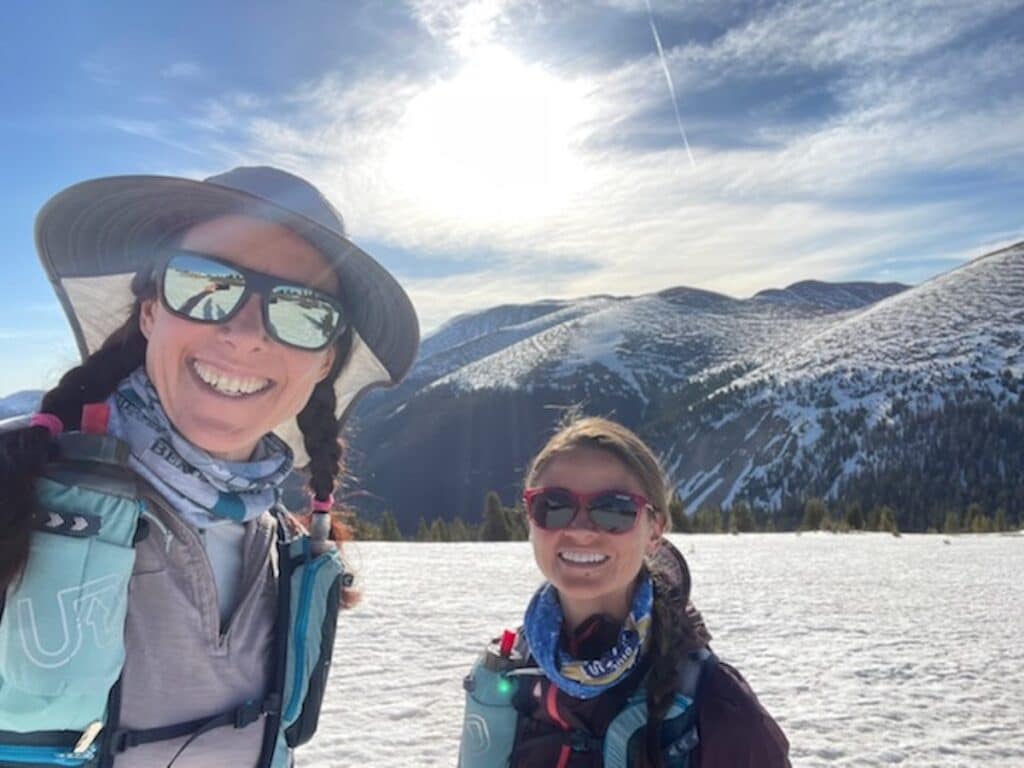
Trust is essential. For the most part, the transition from training on my own to training with a coach was pretty easy; but there were two adjustments with which I struggled: training by time versus mileage and slowing down for easy runs. Training by time instead of mileage messed with my head a bit, especially once I realized that training by time would mean lower mileage than I typically ran and had previously used to gauge my progress. At first, I had a hard time believing that I would be in shape and race ready running fewer miles. I remember thinking, “But I can do MORE, Coach!” when I look at my training calendar for the first month or two, it can be tough to fight that urge to do more than you should.
Similarly, Brandy is teaching me that “easy” running means E-A-S-Y. “Just remember, you can’t go too slow on these days,” she still reminds me sometimes. My easy days used to be running 10 minutes, maybe 10 and a half minutes per mile at the absolute slowest. I remember seeing her reminder in my workout notes and moaning to myself, “Coach, I AM going slow! I’m barely moving!” when I was still running too fast on my easy run days. It was so tough to ignore that voice of a tiny, wrinkle-faced drill sergeant scowling as she scolded me to run faster, FASTER in my head! “Brandy knows what she’s talking about. Trust her, let everything else go,” I finally told myself and my inner drill sergeant. It made perfect sense, as Brandy explained, that I needed to go really easy on your easy run days to ensure that my body can work hard when needed for speed workouts. Now, I’m pretty darned comfortable running easy days at about 11 minutes per mile at the fastest. My inner drill sergeant is still there, but she’s been on a beach vacation since my inner dreadlocked Rastafarian wearing a brightly colored afghan and dark sunglasses took over with my new easy run mantra, “Woah, WOAH, go SLOOOOOOW.”
It took me a while to grasp those lessons, but they came with a pretty sweet payoff quickly. Two months into working with Brandy, I toed the Mt. Evans Round Trip starting line at 10,600 feet and ran 14 ½ miles to the Mt. Evans summit at 14,200 feet then back down fast enough to round out the women’s podium for my first race in two and a half years.
More isn’t always better. Mileage, mileage, MILEAGE had been my running mantra the last few years. So it took me a hot second, or two, to let go of the idea that I had to hit a certain number of miles per week, per month, to be doing it “right,” especially after setting a Pikes Peak Marathon PR in 2019 after very intentionally and significantly increasing training mileage. Brandy often gives me time ranges for my runs. Like my second-grade self dead set on a perfect attendance award at the end of the school year, I still regularly run at the higher end of that range. Coach says to go for either an easy run or hike? I’ll run. Run between 45 and 60 minutes? Sixty it is! (OK, OK, let’s not lie, more like 62 minutes. You know, for good measure.)
I remember one specific Tuesday last summer that this rigid mentality bit me pretty hard. I had paced 25 miles of the High Lonesome 100 course the Saturday before, which was much longer than my typical Saturday long runs, and I had hard hill repeats – one of my toughest workouts of my training cycle at that point – scheduled the next day. I reached the picnic shelter about three miles up from the lower parking lot of Mt. Falcon Park and knew that I’d run for about 75 minutes of my the 75-90 minutes in my training calendar for the day if I headed back down to my car. Even though already tired and pep talking myself into the next day’s workout, my stubborn nature wouldn’t let me only run for 75 minutes. So, instead of wisely heading back down to the parking lot, I added a short out-and-back trail that I knew would get me to 90 minutes. I knew it was a mistake almost instantly, felt sluggish half way through the addition and really tired by the time I did get back to my car; and I spent the rest of the day hoping I didn’t ruin my speed work the next day. Don’t be like me. Be smart – Jeopardizing your hard work is NOT worth an extra mile or two for your weekly tally!
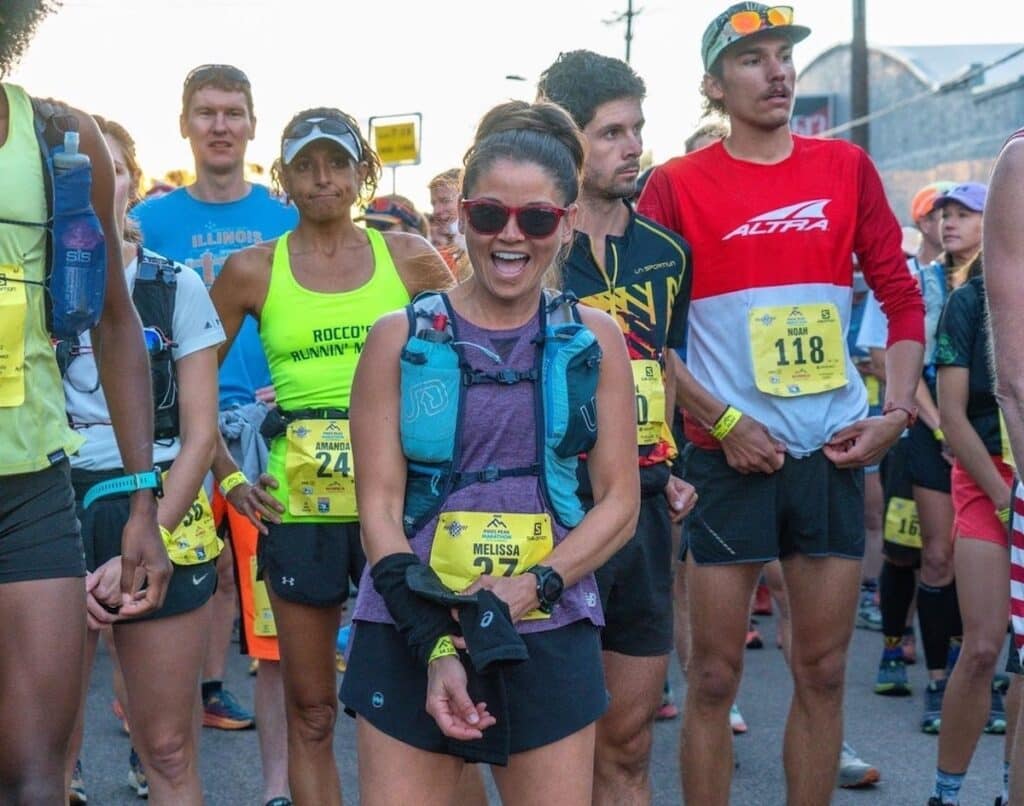
Speed work is not the enemy. So I already knew that speed work is good for me. We all do, right? I can’t say, though, that I’ve ever looked forward to it. Rather, I’ve spent entire days either trying to distract myself from remembering or hyping myself up for a speed workout that evening after work. It hurts. Sometimes, it hurts a LOT. My favorite part of any training block has always been the cool down immediately following a speed workout because I knew I didn’t have to do it again for at least a few days.
At the time I started training with Brandy, it had been probably a solid ten months since I had done any sort of semi-organized speed work; and I was terrified of it. So I was both surprised and beyond grateful to see that hard running made up such a small percentage of my weekly training. She also eased me into speed work really effectively, adding a few minutes more each week and changing routines up every few weeks in very manageable ways that not only built up my physical strength and speed but also my confidence in my running abilities. It was a small percentage of each training week but a really important percentage all the same. Over time, I’ve come to see speed work as another critical building block of each training week rather than a necessary evil.
And let me illustrate just how far I’ve come with speed work from a mental perspective. Just recently, I ran hard 5-minute hilly intervals solo on a gray, eleven-degree day after several inches of snow had fallen, legs burning on the ascents and cold, biting wind immediately taking my breath away and setting my exposed face aflame on the descents. That was most definitely a PR for masochism, but I also knew it had to be done and done on that day despite sunny and much warmer weather the following day. Brandy is great with switching training runs around as needed, but that wasn’t an option that week because I had another speed workout a few days later and needed the extra day of rest between them. There is absolutely, positively, no chance in the universe that I ever would have done a workout in those conditions on my own prior to having a coach to help me to build the mental stamina it required.
For years, my only definition of speed work was the painful, grueling one I had come to dread. Brandy introduced me to one of the newest loves of my life: strides. Never having done them consistently, I had no clue of their benefits. Strides. Are. MAGIC. Seriously, they pack so much bang for your buck! It took me about six weeks of consistently adding strides into easy runs to feel the difference they can make for heavy, tired legs. Ever since, I’m continually amazed that no matter how sluggish I feel on an easy run, a few short strides can wake my legs up instantly and make the remainder of the run much more relaxed and pleasant.
One final thought about speed work: It’s helped me to keep my easy run days easy. Knowing that I have a tempo run, hard intervals, or hill repeats coming up on Wednesday definitely makes slowing down on Monday’s run a lot easier.
Rest is queen. For most of my training block in 2022, I was asleep at 10:00 p.m. and up at 5:00 a.m. every night. That was more than I was used to, and surely a lot more consistent, but still wasn’t enough, especially during the hardest part of my training. Most days I also needed anywhere from a 10- 30-minute nap on top of it to feel functional during the day. Luckily, I had flexibility in my work day so that I could take short naps (that in turn also made my work days a LOT more tolerable – IYKYK). Even on days that I ran easy, I could still tell a big difference in how I felt if I hadn’t gotten enough sleep. I know it’s not always possible with work, a significant other, children, pets, and lots of other responsibilities; but I can’t stress enough how critical rest is to maximize the benefits from your training. Whatever it looks like – meditating for a few minutes before you go to sleep, putting your phone or book away earlier at night, sleeping even 10 minutes longer one or two mornings per week, taking a quick nap in the car while the kiddo’s at swim practice – prioritize a little more R’n’R!
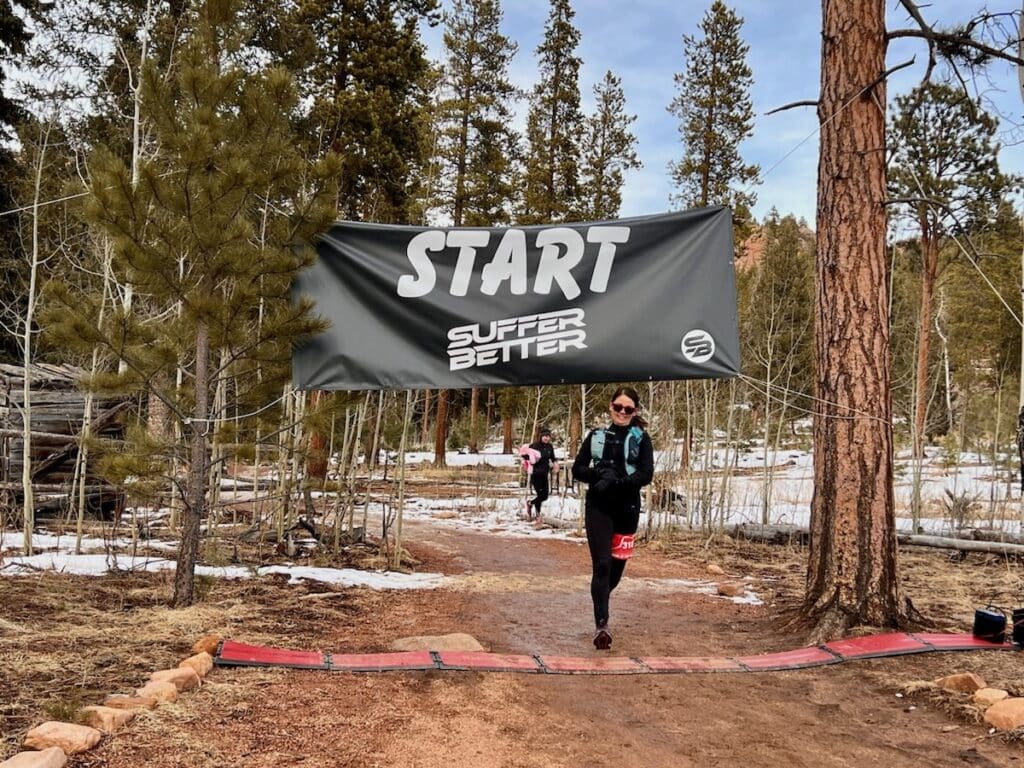
Process outweighs outcome. It’s good to have racing goals, which may be why you are considering hiring or have hired a coach yourself. Putting them on a pedestal above all else, though, can be a disastrously slippery slope to self-imprisonment. We all know the phrase and the mentality that comes with it: brick by brick. It’s cliché but also true. Every run your coach prescribes, whether a 30-minute easy run or a speed workout intended to make you swear him or her out, is there for a reason. You don’t have to fully understand it, but you should abide by it. Keep your racing goals in mind, look across progressively harder workouts over a month, study your training schedule at the beginning of each week. Above all else, though, approach each day with tunnel vision. If you struggle to run slow, be really intentional about slowing down on easy days. If you struggle to push yourself on hard days, really focus on giving it all you’ve got if the training day requires sprinting uphill. Change that comes with consistent training is incremental. . .until it’s not. Come race day, you’ll be more ready than you thought and see how each day up to that point built onto the one before. And who knows? You just may surprise yourself once you see the clock at the finish line.
You still might not hit the mark. . .and that’s OK. I hired Brandy specifically to reach a goal for the Pikes Peak Marathon that I’ve been chasing since 2013. Leading up to the race, I had two strong races and several strong training runs under my belt, ate really clean, and slept and rested a lot more than typical for a training cycle. For five and a half months, I 100% did everything in my power to set myself up for success with Brandy’s help; and there was absolutely no way I wasn’t going to finally hit my mark. Fate, however, had something else in mind for me. That day should have been my best race to date with a monster PR, but instead it was my worst Pikes Peak Marathon and just one minute, 34 seconds ahead of my first and slowest ever Pikes Peak Marathon. I was more upset about that race going awry than I was my last few break ups (IYKYK). I have an intricate theory but still don’t know exactly what went wrong that day and probably never will, but I do know that it had absolutely nothing to do with my training. In fact, I’d stress that without the months of hard work leading up to the race, I wouldn’t have been able to run through whatever obstacles my body fought that day and would have absolutely had a much worse race.
Even before the mental dust from that disastrous day settled, I was so grateful for Brandy and for all of my training, accomplishments, and physically and psychologically improvements over the previous few months. And, really, is there such a thing as a bad day on the trails? I still walked – well, hobbled – away from the Pikes Peak Marathon finish line having spent a beautiful, blue-bird Colorado day with friends old and new and an automatic ‘A’ goal for 2023. That’s one of the many things I love so much about trail running. No matter how long you’ve done it or how much stronger a runner you become, there’s always something more to learn.
Off-season consistency matters. I used to take the term “off season” pretty literally, used to think it a metaphorical physical collapse the second I crossed the finish line of my last race for the year and threw any form of regimented running, running hard or fast, eating clean, you know, pretty much any and all self-discipline, out the window. Sure, the off season is meant for some of that, for being less restrictive. I used to take it too far toward the opposite end of the training spectrum, though; and I’d lose more fitness and gain more weight as consequences.
Brandy definitely understands the importance of giving your body a break, and she definitely gave me one. But I was really struck with just how far maintaining a little self-discipline while doing so could go. After my last race of 2022, I still ran six days per week and skill kept the same basic weekly running structure, though much less intense. And, of course, this included strides. I know I said it earlier, but it bears repeating because I love them SO much. Strides are MAGIC. Because of this consistency, it seemed a seamless transition back to training six weeks later, and I was able to build running fitness more quickly than in the past. I also did indulge some, especially over the holidays (#eatthedamncake), but was also able to keep a very reasonable weight, which is a big deal as age increases but metabolism decreases (IYKYK).
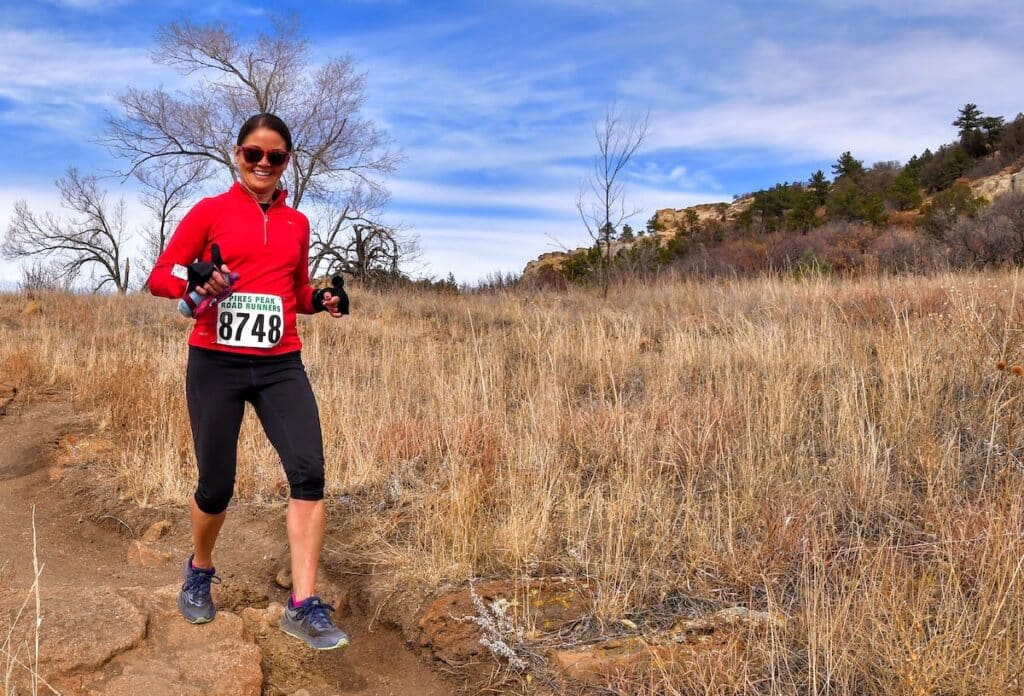
You are a lot stronger than you’ve ever given yourself credit. Of all of my lessons learned, this one is the most meaningful and my favorite. So I saved the best for last. You will likely look at the workouts your coach gives you and think, “Oof, I don’t know if I can do that.” You might be nervous, you might feel scared; but you’ll do it. And you’ll do it over and over again. You’ll look back at those workouts and think, “That was hard, that hurt a LOT, that scared me. . .and I DID IT.” Over time, you’ll find a sense of self-confidence you’ve never known before. Then, next season, you’ll know what’s coming; you’ll think about trail runs and races that once intimidated you; and you’ll think, “I’ve got this.” There’s no better feeling than that, than knowing that not only will you have to do hard things, you’ll look forward to doing them while staring them straight in the eyes rather than averting their gaze.
About the Author

Melissa is a child development researcher, a Colorado native, and a proud auntie of eight not so subtly trying to “brainwash the babies” to become runners too. She ran track in middle and high school, ran cross country two years in college, and has been a trail runner since 2010. Melissa enjoys training and racing; but 60% of the time, she prefers chasing fun runs with friends exploring the mountains with a good craft beer every time. When she’s not taking way too many photos of wildflowers and breathtaking scenery on trail runs, she also enjoys writing poetry and short stories.
Share This Article!


